 Last year, I blogged quite a bit on making modifications to your RV, from low cost mods like battery cutoff switches and drip rail extensions to the more elaborate mods like RV cold weather preparation and sliding cargo trays. While I will still continue to write about RV mods, this year I would like to add some articles about making modifications to tow vehicles that help improve your towing experience. Since I tow with a late model Ford F150, many of the articles will focus on mods I’ve made to my own truck. But I would really like to see some mods made to other tow vehicle brands as well that have helped make towing your RV easier and safer.
Last year, I blogged quite a bit on making modifications to your RV, from low cost mods like battery cutoff switches and drip rail extensions to the more elaborate mods like RV cold weather preparation and sliding cargo trays. While I will still continue to write about RV mods, this year I would like to add some articles about making modifications to tow vehicles that help improve your towing experience. Since I tow with a late model Ford F150, many of the articles will focus on mods I’ve made to my own truck. But I would really like to see some mods made to other tow vehicle brands as well that have helped make towing your RV easier and safer.
So with that said, the first mod I think that is not often discussed in terms of producing more towing power from your truck is reducing parasitic drag on the engine. Popular mods like tuners, exhaust, intake, etc. are common ways to get a decent boost in power from a gas engine. But a naturally aspirated engine, as in the Ford F150, can only make so much towing power without resorting to forced induction, such as a turbo or supercharger. In addition to the popular mods mentioned above, you can still find some hidden power to be tapped. Where is this hidden power? It’s sucked up by all the belt-driven accessories driven by the engine such as the A/C compressor, alternator, mechanical engine fan, and the power steering pump.
One of the largest drags on the engine in terms of power delivery loss is with the mechanical fan, sucking up upwards of 15-20 horsepower under full engagement. You know that loud roaring sound you hear when you’re at full throttle towing your RV up a long grade in the summertime heat? That’s the sound of lost power right when you need it most. And even when you’re not towing, the viscous coupled fan is still causing drag on the engine by being partially engaged which leads to reduced fuel mileage.
So how can we recover some of the lost power from the mechanical fan? By replacing it with an electric radiator cooling fan. That’s just what I did. I used a 19″ electric fan from a mid 90’s Ford Taurus and a fan controller from Flexalite. The fan is rated at an astronomical CFM rating of nearly 5000, more than enough to keep your engine cool under the hottest of conditions. There are other aftermarket electric fan kits for the F150 but like the CFM rating, they are also astronomically priced. I cobbled together a good quality kit for under $200, less than half of the dual fan kits out there.
I mounted the fan in the factory radiator shroud to maintain the factory appearance. You hardly notice it’s there when looking in the engine compartment. But I definitely know it’s there by the fuel mileage increase. I used to average 17 mpg on my daily commute. Now I average an honest no embellishment hand-calculated 18.7 mpg! Now I can understand why many other brand trucks have gone to the electric fan setup, including the new 2010 Ford F150. The increase in power is nice too but a 6000 lb. gas truck getting nearly 19mpg? That’s something to brag about.
I did a complete writeup on my installation including many pictures and all parts and steps to do this mod. So wander on over to ModMyF150.com and have a look at the details of this mod and let me know what you think!
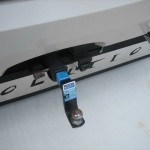
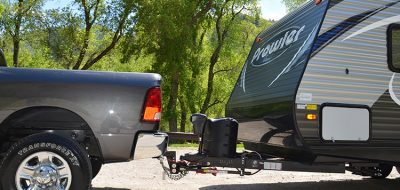

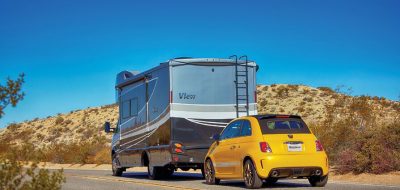
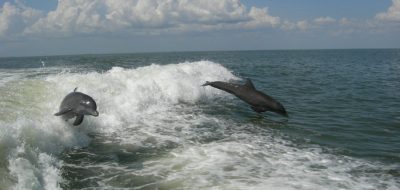
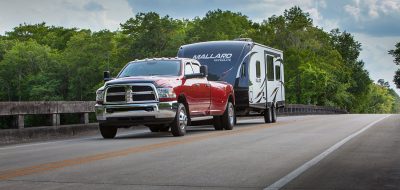
Click here for more on Pressure Washers
This is very interesting, You’re a very skilled blogger. I’ve joined your rss feed and look forward to seeking more of your great post. Also, I’ve shared your web site in my social networks!
ModMyRV
So I returned from my trip covering 1168 miles through all sorts of terrain, including some long steep grades. I averaged 9.1 MPG. That’s the good part. I had some overheating issues on the way back. Here is a link to the specifics:
http://www.modmyf150.com/2010/02/15/ford-f150-electric-radiator-cooling-fan/comment-page-1#comment-75
I still advocate doing this mod with the Taurus/Mark VIII fan but not for towing at the F150’s GCWR. I’ll be switching to more powerful electric fans, probably Flex-A-Lite’s shrouded dual 15″ setup. Once I do this, I’ll report back my findings.
ModMyRV
Just got back from a 200 mile round trip towing my 7500 lb. travel trailer with my 2008 F150 and Taurus electric cooling fan. The route started at 4700 ft, climbed to 7500 ft, then down to 7000 ft. There were several long full throttle pulls in 2nd gear and with many winding sections and the cooling system performed flawlessly.
In addition, I achieved exactly 10 mpg for the trip. I’ve made this trip many times with my rig combo and would get 9mpg consistently, regardless of ambient temperature. So I am quite pleased with the 1 mpg improvement towing.
A nice side benefit of the electric fan versus the mechanical fan is how quiet the cabin is now. The mechanical fan during full engagement at 4000 engine RPM was very noisy. The full engagement would occur often during the long pulls described above. Now, with the electric fan, I cannot hear any fan noise at all.
In late June I will be taking a 1000+ mile trip from Lake Tahoe to southern CA and back, half of which will be through some very high mountain passes. I can’t wait to see how the cooling system will perform during this trip. It should be a great test for both cooling effectiveness and mileage improvement measurements. I’ll report back after the trip!
Engineer
I think you need to re-read my post: I did not say it was impossible to improve your mileage by converting to an electric fan, I just questioned your figures. You comment about doing “simple math” tells me you were not very rigorous in your methodology. Did you measure the temperature of the fuel, humidity and tire pressure at each fill up? Did you measure the time each trip took and atmospheric conditions, such as wind? All of these factors will affect mileage. Did you have your old fan clutch tested to see if it was operating correctly? You are implying that your mileage measurements are good to 0.1 mpg (although you still haven’t said whether your new mileage is 18.5 or 18.7). If so, your TOTAL measurement error is 0.6%.
I maintain fueling records of my Hyundai XG350. I use it for commuting, and the route is the same each day, but the traffic conditions can vary widely. I fuel at the same station in the same way (I fill it up and do not top off the tank). Over six months and 2000 miles, the mileage varied from 19.6 to 22.48, The SMALLEST deviation from average was -0.24%, the LARGEST was 7.37%. The TYPICAL deviation was 4.1%. I would have to drive about 14,000 miles to get the measurement “noise” down to 0.1 mpg. By that time, mechanical wear would have changed the mileage anyway. Unless you are willing to go to a test track and install an ACCURATE fuel flow computer, your measurements are strictly anecdotal.
Your comment “And did you know the 2010 F-150 now uses electric radiator fans? What would the reason?” begs the response: “Why didn’t they do it sooner?” if it produces the results you claim. Detroit has been under tremendous pressure, both customer and politically driven, to improve fuel mileage for years. One answer is that an electric fan gives designers much more flexibility in engine compartment layout. The answer is probably best summed up at Flex-a-Lite’s web site (http://www.flex-a-lite.com/auto/html/frequent-question.html):
What’s the best type of fan to have on a vehicle that frequently tows ?
A good heavy duty clutch and clutch fan. This combination allows for the best air flow to fuel economy ratio.
ModMyRV
How do you account for the extra 40 miles per tank I get after converting to the electric fan? My driving habits have not changed and my route is identical every day. I drive 500 miles per week and have kept hand calculated fuel consumption logs of before and after the mod. Either I can’t perform simple math or something else is missing. Oh I know – the mechanical fan is missing. Or could it be that the engine revs more quickly without the 7 pound mass on end of the water pump pulley thereby requiring less fuel to obtain and sustain cruising speed.
I’ll help you out Engineer. Here are a few links to some real world tests that measured the power losses incurred using a mechanical fan:
http://phystutor.tripod.com/stang/fans.html – dyno of a Mark VIII fan swap
http://www.carnut.com/ramblin/dyno.html – fan and alternator dyno testing
An install on an F150 from a reputable truck magazine:
http://www.truckinweb.com/tech/engine/0809tr_ford_f150_radiator_fan_install/index.html
Oh, and here is a cool video to go along with some real world numbers:
http://www.motorz.tv/blog/2592/f-150-electric-fan-air-intake/
I could go on. Needless to say, there are thousands of people that have done this conversion and the vast majority all seem to have an improvement in mileage. I wonder why that is? I did a lot of research before doing this mod myself and talked to many folks about their claims. So I speak from both theory and practical experience coupled with empirical evidence.
And did you know the 2010 F-150 now uses electric radiator fans? What would the reason? It’s a more complex system, requires new design and engineering, and probably costs more to implement. Why change if the mechanical fan works so well? Better fuel mileage. Any gains in mileage and performance are a slam dunk for any truck manufacturer. And the F-150 gets 1-2 MPG better than the 2004-2008 models configured identically.
Rather than bore readers with what appears to be an endless loop here, let’s have some others report their experiences after doing this mod. How about it folks? Anyone done this mod and want to report your experience?
Engineer
Let’s take your mileage numbers, then. You claim a 1.5 or 1.7 mpg improvement (I am not sure which, so I will use 1.5). Assuming your average commute speed is 35 mph, that works out to 2.06 gph and 1.89 gph for 17 and 18.5 mpg, respectively. That is a difference of 0.17 gph. Using hp = 12*gph, that is 2 hp saved due to electric fan cooling. But, wait, the fan is only on a small part of the time, let’s say 10% (at most). That means the reduction must be on the order of 20 hp to average out to 2 hp! I am sorry, but the belt driving the fan is not capable of transmitting that much power! You can repeat the calculations with different average speeds, but it will only change the numbers fractionally.
Electric retrofit fans are sized to move comparable amount of air to their mechanical counter parts. The largest one I could find is 23 A at 12 V, or 0.37 hp, and the one in the photo looks smaller. This is about the double the hp of the measurements made at the provided link, which makes sense for the 2.2 L engine size. Your numbers simply don’t add up, there just is not that much power being used by the engine fan to justify that large of a mileage improvement.
ModMyRV
While interesting, the measurements are hardly comparable to a 5.4L engine’s cooling requirements and fan clutch assembly coefficient of friction under various loads. Nevertheless, I stand by my mileage improvements as evidence to support that there is significantly more engine power required to turn a mechanical fan under the same load conditions than an electrical fan.
By the way, I performed this mod not for the purposes of a mileage improvement, but to gain more power when towing. The drag at full engagement with the mechanical fan is far greater than that of the electric fan demands on the alternator. Simple calculations will bear this out. It’s a nice side benefit to have a 1.5 MPG improvement though.
Oh, and I have a 135 amp alternator which leaves plenty of margin for other electrical loads while the fan is running.
Al in Omaha
Have you though of using underdrive pulleys? It’s based on the same principle of reducing or eliminating parasitic drag caused by belt-driven accessories.
A Google search of “F150 underdrive pulleys” yielded quiet a few results:
http://www.google.com/search?q=ford+f150+underdrive+pulleys&ie=utf-8&oe=utf-8&aq=t&rls=org.mozilla:en-US:official&client=firefox-a
or
http://tinyurl.com/2cb6px8
——>Al
Engineer
Here is someone who did do the measurements:
http://tinyurl.com/enginefan
What he came up with was a fan load of 0.19 hp for a 2.2L engine, not 15-20 as you stated, even factoring in different engine sizes. Think about it, a 40 A alternator can generate 0.75 hp, maximum, leaving no reserve for other electrical loads. He figured a fuel savings of about 2%, or $34 per year. This was not worth his cost of $85, let alone your cost of $200, not including labor.
Some simple tips for saving fuel:
1. Drive slower (air drag goes up with the square of the speed)
2. Time your trips to use the cooler part of the day (in summer), or warmer part (in winter). This reduces engine cooling (in summer) and heating (in winter).
3. Discard as much of that extra junk that you carry along as possible (weight = fuel). Wait to completely fill your fresh water tanks until you get to your destination.
4. Check your tire pressures (higher = less rolling resistance).
ModMyRV
@Engineer: From one engineer to another, you should know that making categorical statements without facts to support your conclusions is simply bad science.
The missing facts in this case are based on the assumption that the fan is running at 100% duty cycle at all times (this is my interpretation of your assumption), thus requiring the alternator to provide high levels of current continuously. This would have the effect of causing additional drag on the engine all the time (like the mechanical fan), reducing the engine’s capacity to deliver power through the drivetrain, and thusly decreasing fuel consumption.
However, the fan is indeed NOT running continuously. In fact, it is rarely running when the vehicle is in motion (only when the A/C cycles) because the natural airflow through the radiator is more than enough to extract the necessary heat from the radiator produced by the load. And when the fan does need to supplement the natural airflow during high loads at lower speeds (towing up a long grade), the fan operation is transient.
The AVERAGE transient fan operation over time requires substantially less demand of the alternator in terms of engine power consumption than would the mechanical fan over time. This is why there is a mileage improvement in most conditions. Of course, when towing the cooling demands are greater and subsequently the fan operation duty cycle is higher.
The differences between the efficiency of the mechanical fan and the electric fan are reduced in this scenario but the electric fan will always come out ahead given the same load, all other conditions being equal. There is considerably more drag on the engine with a mechanical fan than with the alternator drag produced by a 40 amp electrical load.
I challenge you Engineer to show me the evidence to support your statements. Dyno sheets, alternator output curves under different loads, and mechanical fan engine power consumption curves are all good places to start. Or, alternatively, you can rely on my carefully calculated fuel consumption trials before and after I installed the electric cooling fan. I think the latter would be much easier to quantify and reproduce the data for.
Engineer
The premise that you can increase your AVERAGE fuel mileage by switching to an electric cooling fan is, to put it simply, false. If you don’t believe me, then tell me where the ENERGY is coming from to power the electric fan? There is only one place: from the engine via the alternator. In fact, it will be less efficient than the belt driven fan because of the energy loss through the alternator. The advantage, as I see it, is that, for short distances, the battery can supplement the power produced by the engine. But even this is suspect, because as soon as you pull current from the battery the alternator will automatically kick in to maintain the battery charge state. You would have to disable the voltage regulator to prevent this, something I would not recommend.
ModMyRV
@Michael: My mileage comparisons were done on a mostly flat route with a few small hills along the way. I have yet to test towing mileage or just driving over the mountain passes near where I live.
I am going camping in a few weeks and will report back my mileage over the trip.
ModMyRV
@leadfoot41: The Ford Taurus fan doesn’t flow enough air for the cooling requirements on your F350. The GCWR difference between the F150 and the F350 requires much more air flow at the load limits. I would suggest a dual 16″ fan setup to be sure you get the highest cooling possible.
Michael Belock
Do you get that kind of mileage driving over the rocky mountains?
leadfoot41
Mark, I hate to be repetitive but would this work on an ’04 F350 5.4L I would like to try it & thanks for the info very informative.
ModMyRV
Hey Geoffrey, what size fan and CFM rating did you put on that beast? A 440 requires A LOT of cooling, probably over 6000 CFM at full power. And of course, having the right timing curve can make all the difference in the world, both in coolant temps and power. I’m glad I don’t have to worry about points, condenser, and vacuum advance any more!
Geoffrey Pruett
Put that mod on a last generation 440 Dodge powered “C” and ended up putting the blades back on with a fan clutch as the electric would not move enough air in slow traffic to keep the temp down, worked just fine at road speeds even in the hills but lurching along with the fair/air show traffic was too much.
May have helped the gas gulping but with a 440 the only one that actually made any change was having the distributor recurved by a performance shop. The factory curve was for the station wagon and the engine speeds at highway in a RV run way short on advance which provides overheating and rotton miles per.
ModMyRV
Larry, I don’t think there is an aftermarket electric fan kit specifically for your Damon. I would suggest measuring your radiator size and finding a kit that closely matches those dimensions. A dual 14″ or 15″ with shroud should provide all the cooling you need. Something like this one should be close for your radiator size:
http://www.amazon.com/gp/product/B000CNHFUI?ie=UTF8&tag=moco00f-20&linkCode=as2&camp=1789&creative=390957&creativeASIN=B000CNHFUI
You may have to fabricate some brackets for this kit but that’s the fun part of doing the mod.
Larry T. Higgins
Mark,
I just read your article on the F-150 electric radiator fan installation. I was wondering if there was a simular installation for my 34′ Daybreak by Damom class A motor home. It is powered by a Ford 6.8L V10. I could use some more horsepower and a little extra fuel economy would be nice also….
Thanks in advance for your response.
Larry
ModMyRV
Thanks TT addiction. Try here for your Ram:
http://www.latemodelrestoration.com/item/FLX-262
TT addiction
How about a 2500 Dodge Ram ’98, 4x. Just installed K&N Cold Intake and Magnaflow cat-back sys.
Thanks Mark, love your mods!
MH
ModMyRV
Yes, there is a dual fan setup available for your 7.3. The 7.3 requires dual fans because the cooling requirements require more air flow. The kit is a bit pricey but I think it’s worth it in the long run. Here is a link to the kit on Amazon.com:
http://www.amazon.com/gp/product/B000FK9OES?ie=UTF8&tag=moco00f-20&linkCode=as2&camp=1789&creative=390957&creativeASIN=B000FK9OES
Jim Whittaker
Is there an application for the Ford Diesel? I have the 7.3 TC in my Dullie and I am always interested in picking up a few more horses and improving fuel econmeny.